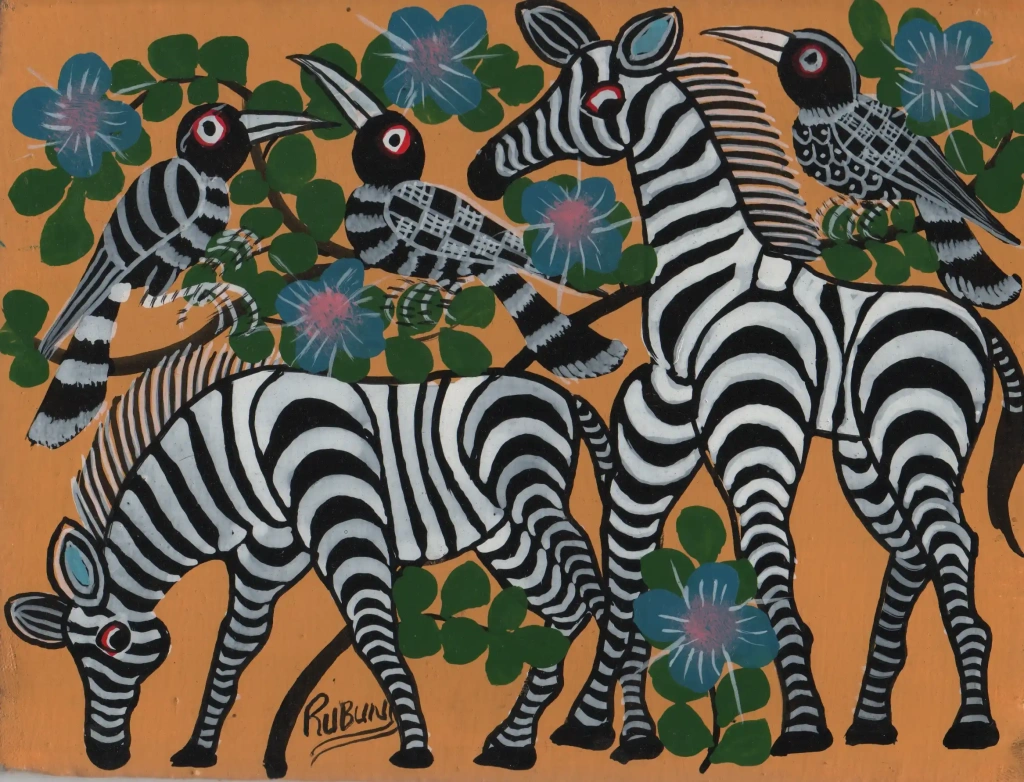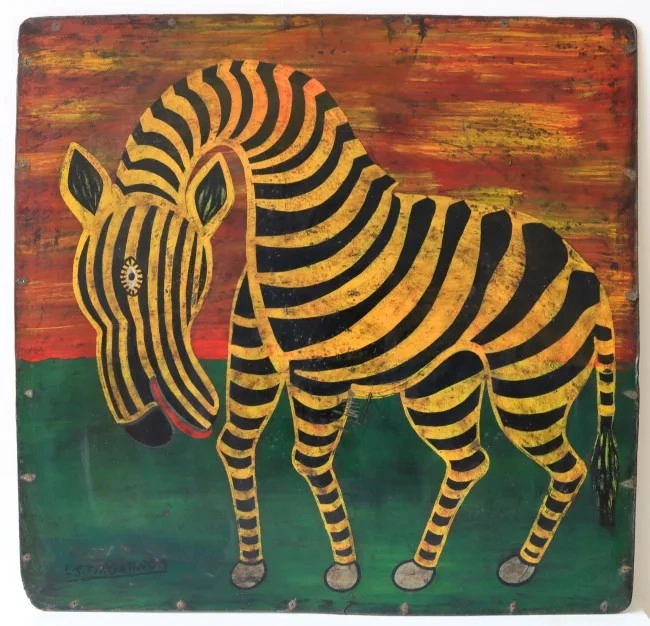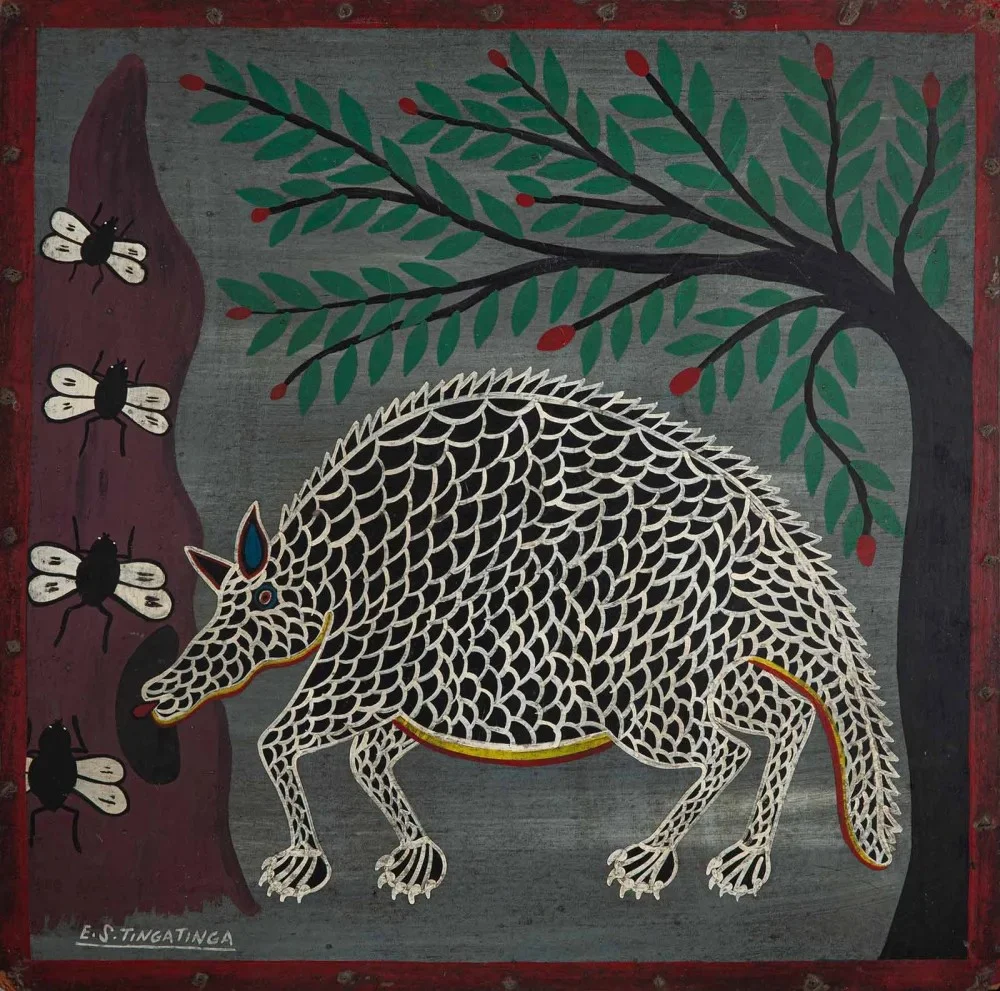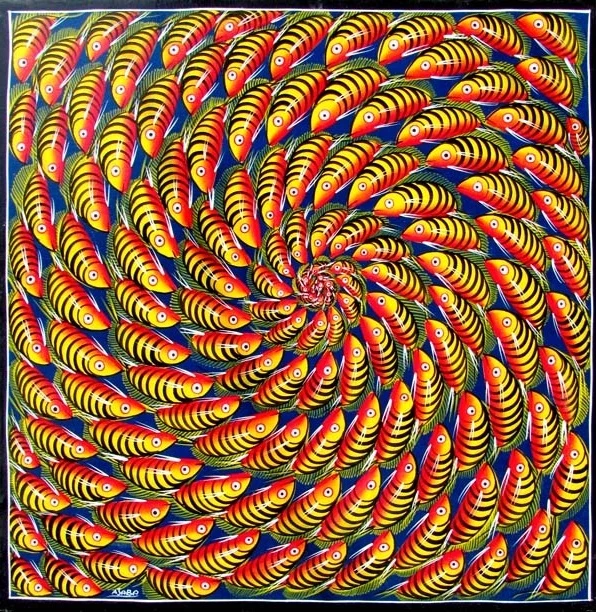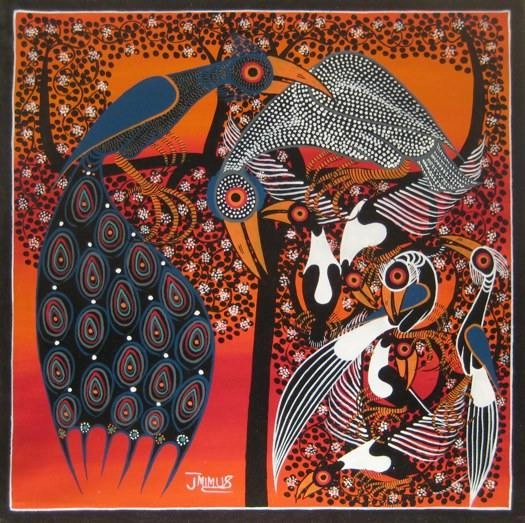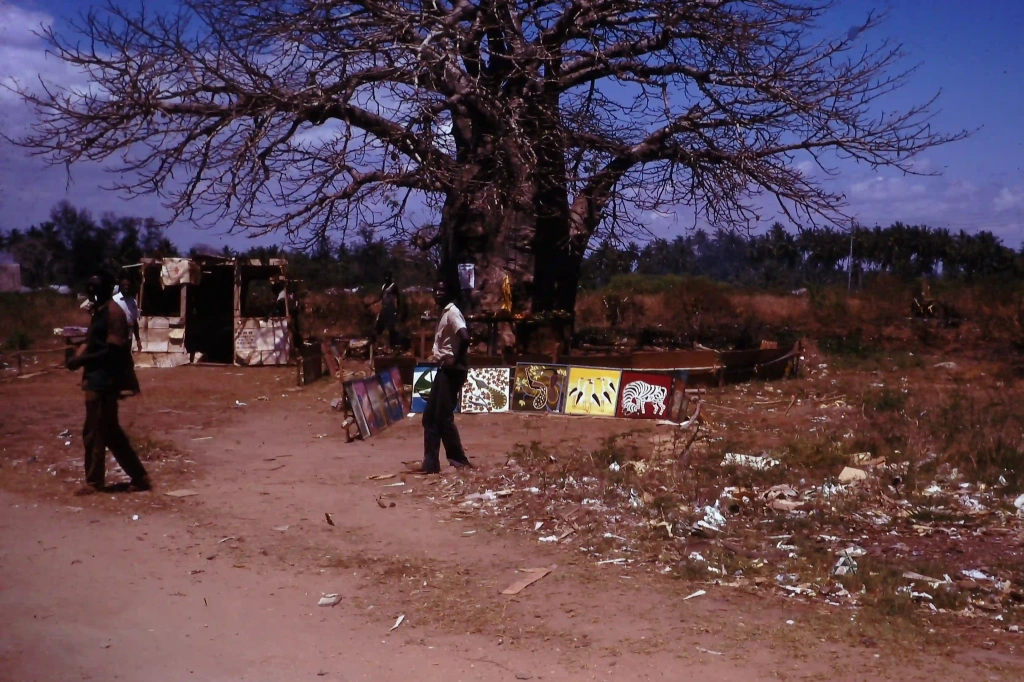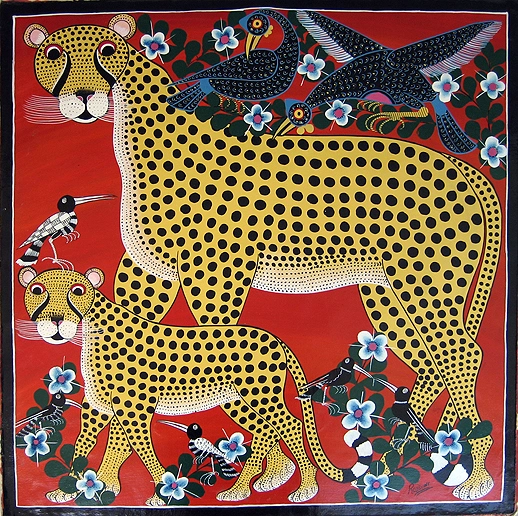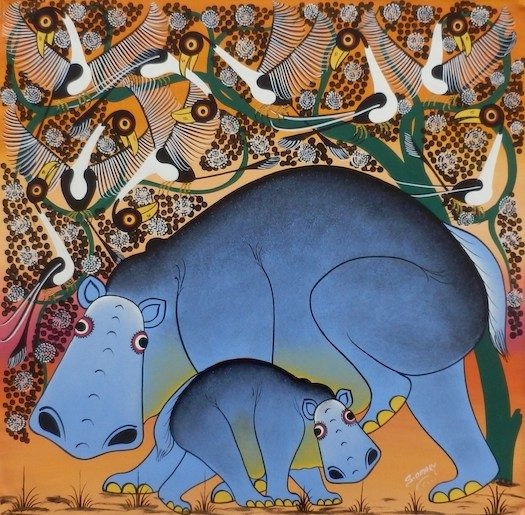Tingatinga is a painting style that depicts African animals in bright colors, usually on square canvases. It is characterized by simplicity, a lack of perspective, and vivid, saturated colors. This style originated in Tanzania in the 1960s, but it’s now popular throughout East Africa and recognizable in many other parts of the world.
We’ll introduce you to Tingatinga paintings, show you examples, uncover the origin of the name and the roots of the style, and tell you where to buy original Tingatinga art.
Tingatinga art
Originally, Tingatinga paintings were created on square pieces of hardboard, roughly 60 cm by 60 cm (24 in by 24 in). This material was both affordable for artists and convenient for buyers — small paintings were easy to pack into a suitcase and take home as souvenirs. That’s why Tingatinga is sometimes called “airport art” — it travels well.
Historically, the paint used was enamel — the kind used for bicycles. It dries slowly, gives a glossy finish, and keeps colors bright. Today, quick-drying enamel paint is more common. But the subjects remain mostly the same as in the 1960s–70s: iconic African animals, Tanzanian landscapes, and occasionally people or buildings.
Today, souvenir shops in Tanzania offer not only the classic small square paintings, but also rectangular ones. Long vertical panels are popular too — perfect for decorating wall spaces between windows. These simplified, brightly colored animals are also featured on home décor items, such as coat racks.
You’ll also find recognizable Tingatinga-style animals and plants on a wide range of souvenirs: mugs, ashtrays, compact mirrors, wallets, coasters, and more.
Beyond the usual Big Five animals, you’ll find fish, scenes from daily life in Tanzanian cities and villages, and various ornamentation styles. Artists from Zanzibar, the famous Tanzanian island, helped expand the range of subjects. You’ll even find biblical themes and images referencing traditional East African myths. Still, giraffes, zebras, elephants, lions, peacocks, and antelopes remain the most popular with buyers.
The painting process remains unchanged: artists first apply background colors, allow them to dry, and then paint the main subjects on top. Often, a single canvas features a variety of animals, surrounded by patterns or flowers. Another common motif is a school of fish in the shape of a spiral. These can be uniform in shape or a colorful mix of fish in different sizes and forms.
Essential features of the Tingatinga style: all images are flat, with no shadows, adhering to the principles of primitivism — clear, bright colors and detail across all planes.
Modern works are often created on canvas, making them easy to transport — they can be removed from their frames, rolled into a tube, and packed neatly.
Edward Tingatinga — the Tanzanian artist behind the style
Tingatinga is the last name of the artist who created this style. Edward Saidi Tingatinga was from southern Tanzania. Some sources say he was born in northern Mozambique. Still, relatives and artists who knew him insist he was born in a now-vanished village called Namochelia, in Tanzania’s Ruvuma Region near the border.
At the age of 25, in 1957, Edward moved north to the Tanga Region of Tanzania for work, initially on a sisal plantation. In 1960, he relocated to the capital at the time, Dar es Salaam, where he worked as a gardener, then as a fruit vendor, and finally as a hospital lab assistant.
Eventually, he began working for an Indian family who practiced Hinduism. Their home was filled with calendars featuring scenes from Hindu mythology. Around this time, Edward was also exploring the arts — he played xylophone in an amateur band. In 1968, he began painting by copying the calendar scenes. That’s why you often see peacocks in his early works.
Since Tingatinga was self-taught, the naïve style developed naturally. He soon married, and his wife sold his paintings near central Dar es Salaam. Tourists and expats in the upscale Oyster Bay district quickly took notice.
His work became increasingly popular. Locals introduced him to other artists and gallery owners. He had solo exhibitions, and even some of his paintings were shown in parts of Europe and Japan.
Edward left his job at the hospital and devoted himself to painting. He gathered a group of students who adopted his techniques. Relatives from his village also came to learn — it’s said he signed some of their works with his name. His paintings sold well, and his style was widely imitated.
This lasted for four years, until his life was suddenly cut short. In 1972, Edward Tingatinga was killed by a stray police bullet. Official explanations were never given, but one version of events suggests this: Edward and some friends were driving at night in Dar es Salaam to celebrate a successful sale. A police patrol mistook them for criminals and ordered the car to stop. The driver did not comply, and police opened fire. Edward was hit and died instantly. He was 40 years old.
The tragic news spread throughout Tanzania and abroad. From then on, his school expanded, welcoming new members while largely continuing to reproduce the founder’s works.
Today in Dar es Salaam, the same shop where Edward’s first works were sold is home to the Tingatinga Arts Co-operative. His students worked there until 2015, when the last direct student passed away. Now, students of his students carry on the tradition. The style is so widespread that hundreds of artists across Tanzania — and even in Kenya, Mozambique, and beyond — replicate it.
Interestingly, the style even managed to go beyond painting and made its way onto television.
Tinga Tinga Tales
The Tingatinga painting style is so visually appealing to children that in 2011–2012, the BBC commissioned an educational cartoon series in Kenya called Tinga Tinga Tales.
It features animated animals telling stories for kids, each episode based on a traditional African tale explaining some animal trait, like why snakes have no legs, how zebras got their stripes, or why chameleons change color.
A total of 52 episodes were made, each 11 minutes long. The show was a hit beyond East Africa and aired in many countries, including the UK, France, Germany, and others.
The catchy opening song, composed by Kenyan musician Eric Wainaina, is recognized by children in many countries.
Thus, paintings created by a self-taught artist in a unique local style have come to life and spread far beyond Tanzania's borders.
All content on Altezza Travel is created with expert insights and thorough research, in line with our Editorial Policy.
Want to know more about Tanzania adventures?
Get in touch with our team! We've explored all the top destinations across Tanzania. Our Kilimanjaro-based adventure consultants are ready to share tips and help you plan your unforgettable journey.















